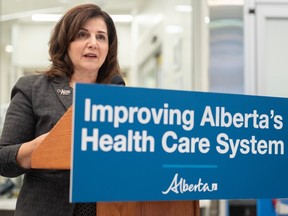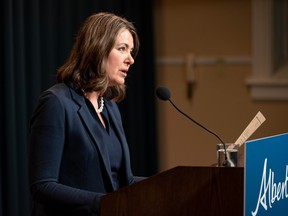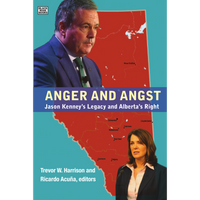Alberta Medical Association calls for updates to doctor incentives to help address hospital crisis
The head of the Alberta Medical Association (AMA) says the government needs to immediately update incentives to retain hospital physicians before critical health care programs bleed out.
A contract signed in September 2022 ushered in a broad increase to the physician funding pot, but AMA president and Medicine Hat emergency physician Dr. Paul Parks said within the deal, some specific incentives haven’t been updated for 10 or more years and desperately need an overhaul.
“It’s now become a crisis,” he told Postmedia in an interview Thursday, noting that if the funding system isn’t competitive, the province can’t recruit and retain physicians.
In a letter to AMA members published Thursday, Parks offered a list of five proposals for the provincial government meant to help address the crisis in acute care as hospitals across the country struggle with a depleted workforce and major capacity pressures .
“Everybody’s competing for a really scarce commodity right now, which is the human beings that are skilled in healthcare,” he said.
“It’s in so much turmoil right now, if we don’t do investment up front we’re going to lose more physicians,” he said.
The AMA wants to see updates to alternative relationship plans (ARPs), which are more comparable to a salary than a fee-for-service pay model, and better incentives for after-hours care.
Parks said if not addressed, the current system will continue to discourage doctors from taking late-night hospital shifts, which can in turn disrupt their clinical practices.
“Albertans want to be able to be taken care of in the same fashion at two in the morning as they are at two in the afternoon and that comes with a premium and added cost,” he said.
The letter proposes changing the physician on-call program to better attract specialists like obstetricians, who help deliver babies on demand, and anesthesiologists, who administer anaesthetics to patients during surgeries, including emergency operations.
“We’re trying to incentivize the type of care that would help our hospitals flow 24/7,” said Parks.
Also on the AMA’s wish list is to de-escalate “the stipend crisis.” This includes a variety of top-ups, Parks said, often offered in areas that are difficult to get coverage in, like rural and remote northern communities.
“It’s about transparency and equity, but it’s more around really speeding up things are critical, that if we don’t invest now, we’re going to lose certain critical services,” he said.
Alberta Health did not immediately provide comment to Postmedia Thursday.
Some problematic policies ‘inherited’ from Shandro
Parks said some of the problems that need fixing stem back to the 2020 decision under then-UCP health minister Tyler Shandro to tear up the province’s contract with doctors .
“Alberta was just no longer a competitive place to come and work. So we’re behind the eight ball because of that,” he said, adding that Shandro-era roll-backs on compensation for some things like overhead operating costs still sit on the books and need to be removed, even though they haven’t been implemented.
“It’s still kind of hanging over everybody’s head,” said Parks. He emphasized that Health Minister Adriana LaGrange inherited problems, but he believes she is dedicated to working with the AMA to stabilize the system.
“None of the stuff we propose in this letter is new … it’s all issues that have literally been going on for five to 10 years and just have never been addressed or modernized or updated,” he said.
The AMA contends that if the government adopts its proposals, they could measurably improve ER wait times, surgical waits, patient flow, admissions and discharge, patient health outcomes, surgical recovery, after hours care, and specialist availability.
The calls come after Premier Danielle Smith and LaGrange announced in December a $200-million boost expected to fill a short-term gap and help primary care and rural practices around the province. The bump of $100 million in early 2024 and another $100 million in early 2025 is expected to stabilize failing practices until a new payment model is ready.
The money came as part of an agreement with the federal government, announced the same day , promising $1.1 billion over three years, including $285 million per year in new funding from the federal government, and $70 million per year in previously-announced mental health and substance use funding in Alberta.
However, a deal on a new provincial primary care funding model that the AMA has been calling for to provide panel-based funding based on things like patient load and time spent on care and, more broadly, to help keep the lights on in family doctor’s offices, is still in the works.
In October, LaGrange signed a memorandum of understanding, or promise to make a deal, with the AMA.
Related
X: @reportrix











